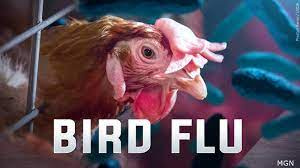Canada Govt Admits That It Uses Computer Modeling To Drive Public Health Mandates.
The Public Health Agency of Canada has created a Canadian COVID-19 modelling network made up of federal, provincial, territorial and university-based modellers and epidemiologists. This group of experts supports Canada’s efforts to model and make predictions on the COVID-19 epidemic.
Mathematical modelling of infectious diseases is a tool to:
- study how diseases spread
- anticipate the future course of an outbreak
- help guide public health planning and infectious disease control
Models use mathematical equations to estimate how many cases of a disease may occur in the coming weeks or months. They help researchers simulate real-world possibilities in a virtual environment.
While models can’t predict what will happen, they can help us understand what might happen in certain scenarios. This can help us plan and act to achieve the best possible outcome.
Canada’s approach
Canada has been using data and modelling throughout COVID-19 to guide public health action.
The Public Health Agency of Canada has created a Canadian COVID-19 modelling network made up of federal, provincial, territorial and university-based modellers and epidemiologists. This group of experts supports Canada’s efforts to model and make predictions on the COVID-19 epidemic.
Canada uses 2 modelling approaches:
- forecasting models estimate how many new cases and deaths we might see in the coming week
- dynamic models show how the epidemic might unfold over the coming months, based on:
- how the virus behaves
- the potential impact of public health measures
Why modelling is important
Using these models, we can:
- prepare our health system for the projected number of patients
- evaluate and adjust public health measures
Infectious disease patterns are affected by our actions to prevent spread. Models and their predictions therefore will change depending on the actions of the population. They tell us which public health measures are working to slow the spread of COVID-19.
At this time, modelling data shows that public health measures remain essential to controlling COVID-19 in Canada. These measures include:
- physical distancing
- finding and isolating cases
- tracing and quarantining contacts
- preventing spread from cases related to travel
Just as case rates of COVID-19 differ across the country, projections also differ. As we learn more about the virus, we update our models accordingly.
Click the link and go to the list of PDF files they have links for. These are mathematical outputs from their modeling.
At the back of these PDF documents they list their assumptions used as input into the models.
Source: Canada.gov



